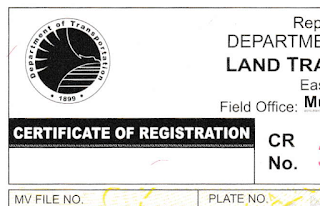How to Prepare for a Trip (Part 1)
Luggage-related tips
One day, as I sat in one of those trans-Pacific flights, I heard the pilot announce that he was diverting our plane to Anchorage, Alaska because of volcanic activity that was happening somewhere along our original route. Luckily, I had chosen a connecting flight whose departure time allowed for some delay in my schedule. And boy, was it cold in Alaska! Although our stopover at Anchorage was very brief, I was so thankful that I wore my jacket instead of packing it into my checked luggage.On another trip, a flight attendant accidentally spilled coffee on me. I smelled like a percolator and felt uncomfortable for the rest of the flight.
These incidents have taught me to always have spare clothing with me.
I'm sure you also have stories to tell about trips that have gone awry. Years of traveling have taught me to be ready for sudden turns and mishaps. In this and succeeding posts, I will share how I have made myself better prepared as a traveler. While these tips are geared towards overseas air travel, they may be also be applicable to overland and ocean trips.
One of my biggest fears is losing my luggage. While I have no control over what happens to my luggage once I check it in, there are steps that I can take to reduce the probability and impact of such a catastrophe.
Use simple, streamlined luggage
I use luggage that is water-resistant, lightweight and tough. My luggage is also physically streamlined, with no external pockets or straps that can get snagged and pulled apart by machinery or other baggage.Personalize the appearance of your luggage
As can be seen in the photo, I attached some stickers to my luggage to make it look easy to spot on an airport carousel. There's at least one sticker on each side so that I can see it whether my luggage is upright, upside down, or lying on its side.Use standard-sized luggage
I use standard luggage sizes and shapes. I avoid anything that requires special handling by the airline, such as oversize, very small or irregularly shaped bags and packages. If you must bring something odd, then be well-prepared for delays and other problems.Don't overload your luggage
To give my luggage a better chance of surviving the trip, I stay well within my its weight and volume capacity limits. Overweight or over-packed luggage is more likely to burst open, lose a wheel, or break a handle. I need to make smart decisions about what to bring to the trip and what to leave at home.What to pack in your carry-on bag
Having taken all these precautions, I must still be prepared for the possibility that my checked-in luggage will be delayed. So, I include my medicines and a change of clothes in my carry-on bag so that I will have something to tide me over in an emergency.Include vital information in every bag
I make it easy for the authorities to reunite me with my luggage by putting a piece of paper with my name, phone number, and origin and destination addresses inside every piece of luggage.Pick up your luggage immediately
Upon landing at the airport, I try to pick up my luggage as soon as possible—before somebody else does! These days, airport officials rarely ever stop people to check whether the luggage they are taking away is really theirs.Related articles:
How to Prepare for a Trip (Part 2) shows how to unlock the power of your smartphoneHow to Prepare for a Trip (Part 3) is a rundown of miscellaneous preparations
How to Prepare for a Trip (Part 4) introduces a travel kit




Comments
Post a Comment